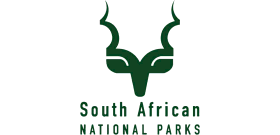 New SANParks Conservation Fees for 2025/26: What to Know for Southern Africa’s Protected Areas
New SANParks Conservation Fees for 2025/26: What to Know for Southern Africa’s Protected Areas
South African National Parks (SANParks) has officially released its updated 2025/26 daily conservation fees, effective from 1 November 2025 through 31 October 2026. These fees apply to all visitors entering the country’s 21 national parks and play a vital role in supporting conservation projects, anti-poaching operations, and the upkeep of park infrastructure. For Africa’s travel sector, understanding these changes is essential for planning, pricing, and advising clients on the best ways to experience South Africa’s natural heritage.
The new tariff schedule reveals a wide range of entry costs, reflecting the diversity of South Africa’s protected areas. Smaller or less-visited reserves such as Camdeboo National Park, Bontebok National Park, and Agulhas National Park offer some of the most affordable rates, while iconic destinations like Kruger National Park, Kgalagadi Transfrontier Park, and the Cape of Good Hope section of Table Mountain National Park remain at the premium end of the scale.
2025/26 Conservation Fees at a Glance
For the upcoming season, the daily conservation fees are structured as follows:
- Standard (Foreign) Visitors: R52 – R134 per day
- SADC Nationals: R26 – R73 per day
- South African Citizens/Residents: R21 – R55 per day
This tiered pricing system continues to offer the most significant discounts to South African and SADC travelers, who pay up to 65% less than international visitors. The approach is designed to encourage regional tourism and make local travel more accessible for South Africans and their neighbors. To benefit from these reduced rates, visitors must present valid identification, such as a South African ID or a SADC passport, at the park entrance.
Ranking the Parks: From Most Affordable to Premium
The updated fee structure highlights the range of experiences available across the SANParks network. Here’s how the parks stack up for adult daily conservation fees in 2025/26:
Most Affordable Parks
At the budget-friendly end, Camdeboo National Park stands out as the cheapest overall, with daily fees starting at R52 for foreign visitors, R26 for SADC nationals, and just R21 for South African citizens. The Garden Route National Park (Knysna section) matches these low rates, making it an attractive option for those seeking coastal scenery without a hefty price tag. Bontebok, Agulhas, and Tankwa-Karoo National Parks also offer excellent value, with standard rates under R65 per day.
Mid-Range Parks
Moving up the scale, parks such as Augrabies Falls, Golden Gate Highlands, Karoo, Mapungubwe, Marakele, and Mountain Zebra fall into the mid-range category, with daily fees for foreign visitors set at R73. These parks are celebrated for their unique landscapes, biodiversity, and cultural significance, offering a balance between affordability and memorable experiences.
Premium Parks
At the top of the pricing spectrum are South Africa’s flagship reserves. Kruger National Park leads as the most expensive, with a daily conservation fee of R134 for foreign visitors, R73 for SADC nationals, and R55 for South Africans. Kgalagadi Transfrontier Park and the Cape of Good Hope section of Table Mountain National Park also command higher fees, reflecting their global appeal and the extensive resources required for their management. Addo Elephant National Park rounds out the premium category, with a daily fee of R110 for foreign visitors.
Seasonal and Sectional Variations
Some parks, such as the West Coast National Park, adjust their fees seasonally. During the famous flower season (August–September), rates increase to R121 for foreign visitors, R61 for SADC nationals, and R48 for South Africans, while off-season rates are more moderate. The Table Mountain National Park also differentiates between its sections, with the Cape of Good Hope attracting the highest fees due to its popularity and unique attractions.
Maximizing Value: The SANParks Wild Card
For those planning multiple park visits, the SANParks Wild Card remains the most cost-effective option. This annual pass provides unlimited access to selected parks for a year, offering substantial savings for frequent explorers. The Wild Card is especially valuable for regional travelers and families who wish to experience the breadth of South Africa’s protected areas without incurring daily fees.
Economic and Conservation Impact
The funds generated from conservation fees are critical for sustaining the parks’ ecological integrity. They support anti-poaching patrols, habitat restoration, community outreach, and the maintenance of visitor facilities. As the demand for nature-based tourism grows, these revenues ensure that South Africa’s national parks remain world-class destinations for wildlife viewing, adventure, and cultural discovery.
Opportunities for Africa’s Travel Sector
The updated fee structure presents new opportunities for the continent’s travel industry. By promoting lesser-known parks with lower entry costs, operators can diversify itineraries and reduce pressure on high-traffic destinations. The tiered pricing also allows for more inclusive travel, enabling a broader segment of the population to experience the country’s natural wonders. As regional tourism continues to recover and evolve, these changes are likely to influence travel patterns, product development, and marketing strategies across Southern Africa.
With the 2025/26 conservation fees now in effect, it’s an ideal time for industry professionals to review their offerings, educate clients about the value of conservation, and encourage responsible exploration of South Africa’s extraordinary national parks. Whether seeking affordable escapes or premium wildlife experiences, the new tariffs ensure there’s a protected area to suit every interest and budget.
